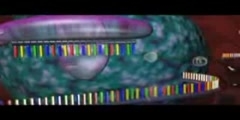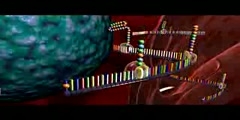RNA interference (RNAi)
This video shows how RNA interference works in the cells. Video reference: Nature.com Info: RNA interference (also called RNA-mediated interference, abbreviated RNAi) is a mechanism for RNA-guided regulation of gene expression in which double-stranded ribonucleic acid inhibits the expression of genes with complementary nucleotide sequences. Conserved in most eukaryotic organisms, the RNAi pathway is thought to have evolved as a form of innate immunity against viruses and also plays a major role in regulating development and genome maintenance. The RNAi pathway is initiated by the enzyme dicer, which cleaves double-stranded RNA (dsRNA) to short double-stranded fragments of 20 25 base pairs. One of the two strands of each fragment, known as the guide strand, is then incorporated into the RNA-induced silencing complex (RISC) and base-pairs with complementary sequences. The most well-studied outcome of this recognition event is a form of post-transcriptional gene silencing. This occurs when the guide strand base pairs with a messenger RNA (mRNA) molecule and induces degradation of the mRNA by argonaute, the catalytic component of the RISC complex. The short RNA fragments are known as small interfering RNA (siRNA) when they derive from exogenous sources and microRNA (miRNA) when they are produced from RNA-coding genes in the cell's own genome. The RNAi pathway has been particularly well-studied in certain model organisms such as the nematode worm Caenorhabditis elegans, the fruit fly Drosophila melanogaster, and the flowering plant Arabidopsis thaliana. The selective and robust effect of RNAi on gene expression makes it a valuable research tool, both in cell culture and in living organisms; synthetic dsRNA introduced into cells can induce suppression of specific genes of interest. RNAi may also be used for large-scale screens that systematically shut down each gene in the cell, which can help identify the components necessary for a particular cellular process or an event such as cell division. Exploitation of the pathway is also a promising tool in biotechnology and medicine. Historically, RNA interference was known by other names, including post transcriptional gene silencing, transgene silencing, and quelling. Only after these apparently-unrelated processes were fully understood did it become clear that they all described the RNAi phenomenon. RNAi has also been confused with antisense suppression of gene expression, which does not act catalytically to degrade mRNA but instead involves single-stranded RNA fragments physically binding to mRNA and blocking translation. info ref: http://en.wikipedia.org/wiki/RNAi
Channels: Scientific Animations Genetics Caenorhabditis elegans
Tags: RNA i RNA interference C elegans
Uploaded by: benchwork ( Send Message ) on 26-03-2007.
Duration: 4m 53s














